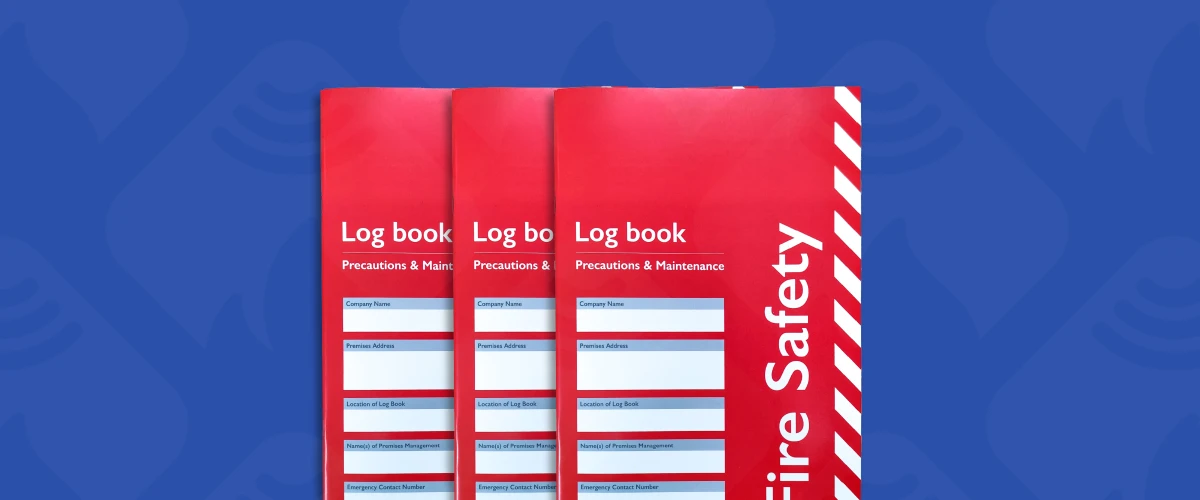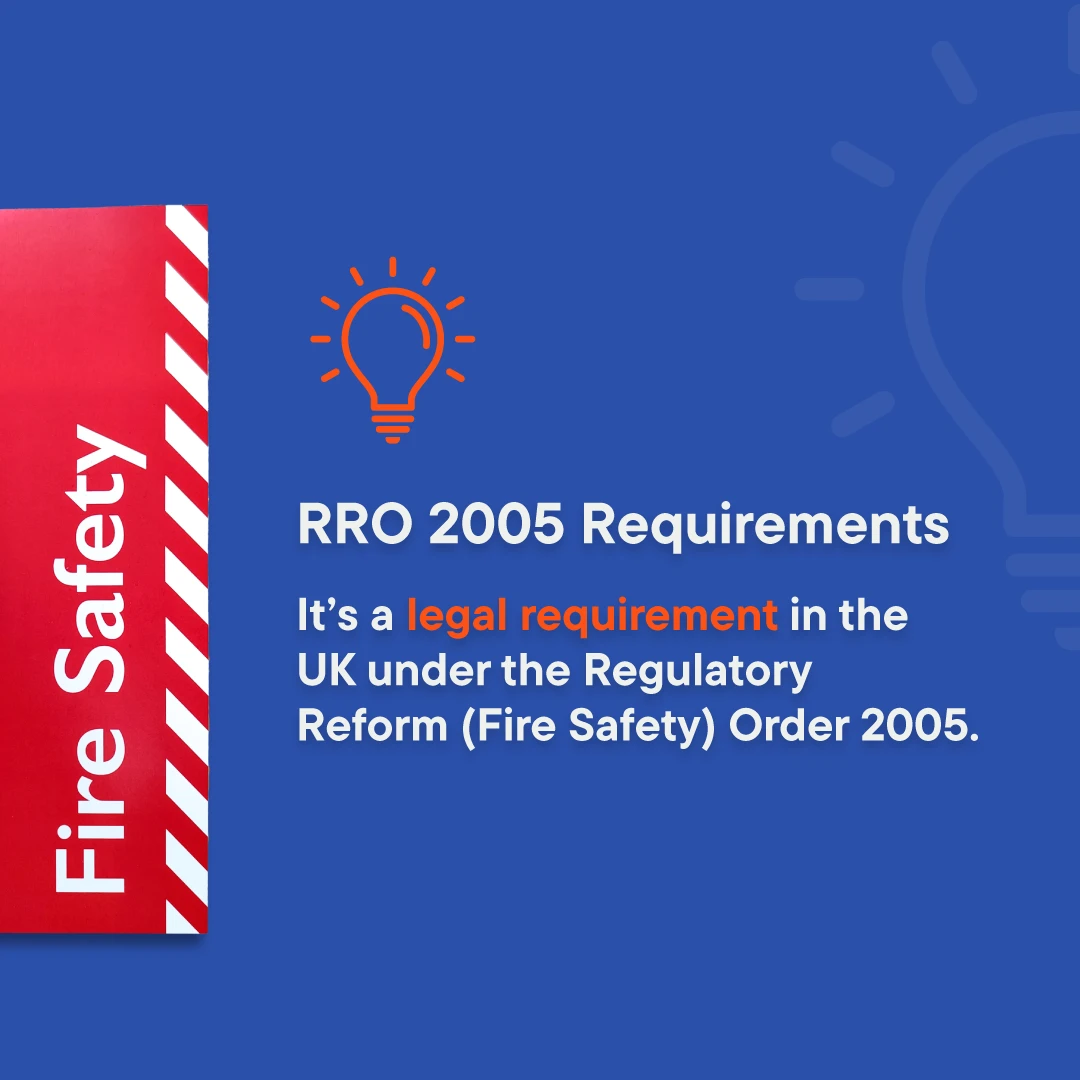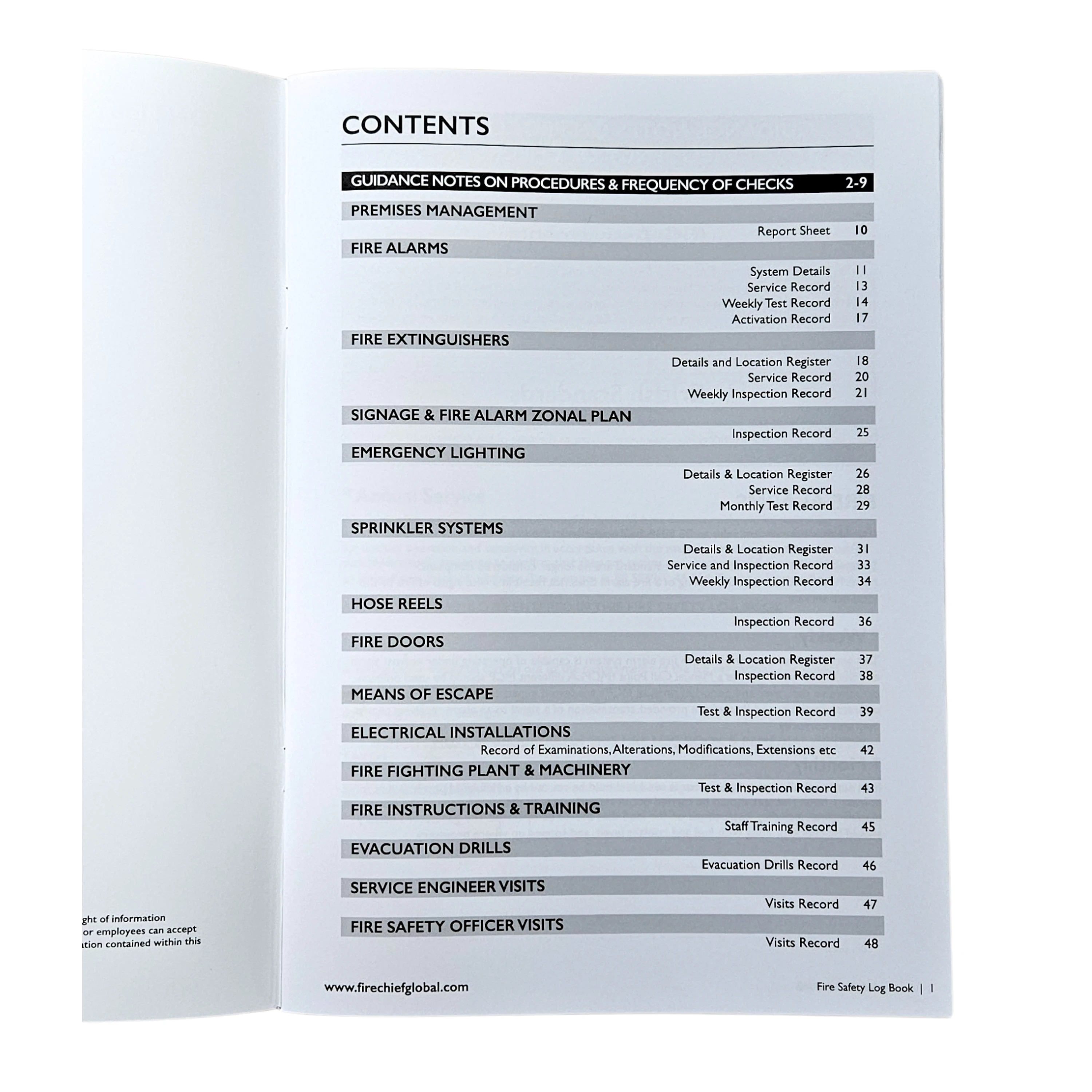
Need assistance?
Need Assistance? Call Us 0330 058 0630
















14/10/2025 • by Alice P

A fire safety log book (sometimes referred to as a fire alarm log book, fire precautions log, or fire safety register) is a formal record-keeping tool for all checks, tests, maintenance, incidents, training and inspections associated with fire safety in a building.
The purpose of the log book is to serve as a chronological, auditable record that a building is being managed safely, that fire safety systems are being maintained and that legal duties are being fulfilled.
In the UK, the Regulatory Reform (Fire Safety) Order 2005 (RRFSO) sets out duties for the 'responsible person' (which may be the owner, employer, landlord, or occupier) to ensure fire safety arrangements are in place, maintained and monitored.
The law doesn’t mention a 'log book' by name, but it requires that all fire safety activities (maintenance, testing, staff training, inspections, etc.) be recorded and auditable.
Having a well‑maintained log book is the most practical, recognised way to satisfy the legal requirement for record keeping.

Demonstrates compliance & due diligence: Shows that you are actively monitoring, testing, maintaining and responding to problems.
Audit trail/evidence in case of fire: Helps reconstruct what was done, when and whether systems were in service.
Helps spot recurring faults or trends: Centralising records helps detect patterns and take preventive action.
Ensures continuity & consistency: Keeps track of maintenance even when staff or contractors change.
Supports insurance and litigation defence: Provides proof of maintenance and adherence to safety protocols.
Improves overall fire safety management: Encourages discipline and consistency in fire safety checks.
Useful communication tool: Allows engineers, inspectors and staff to quickly see system status and issues.

A good fire safety log book should include details about the premises, responsible persons, system specifications, and records of regular tests, maintenance, and incidents.
It typically covers fire alarm systems, emergency lighting, firefighting equipment, fire doors, training, drills and inspection reports.

Installers and engineers play a key role in ensuring clients maintain accurate fire safety records.
Provide a suitable log book during handover, explain how to record tests, submit structured service reports and encourage regular use.
Many believe a log book is optional or only needed when something fails.
In fact, the requirement to keep fire safety records is mandatory under the Fire Safety Order.
All tests, inspections, activations and repairs should be logged chronologically.
A fire safety log book is not just paperwork; it’s proof that fire protection systems are being managed responsibly. It demonstrates compliance, provides traceability and helps keep buildings and occupants safe.
29/07/2025 • by Alice P
We use cookies to enhance your site experience. Choose your preferences below.
